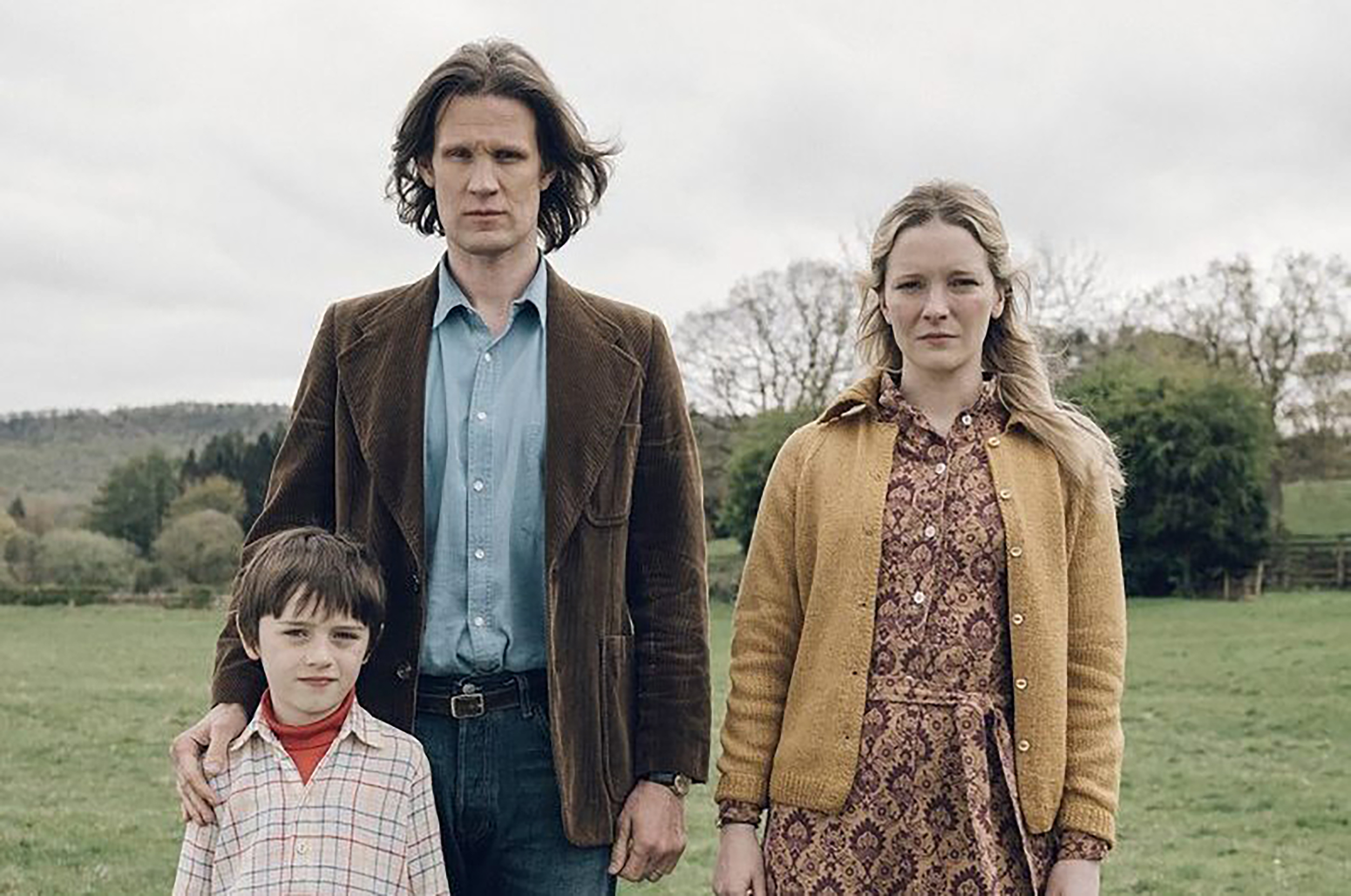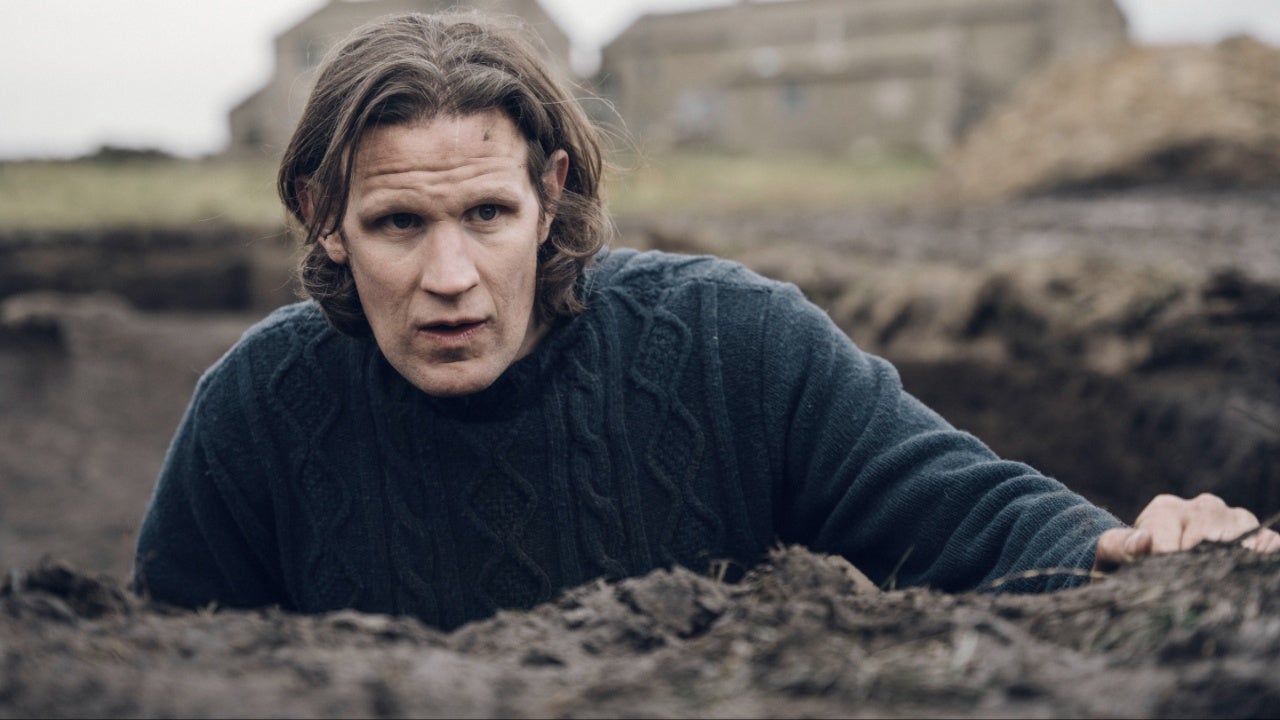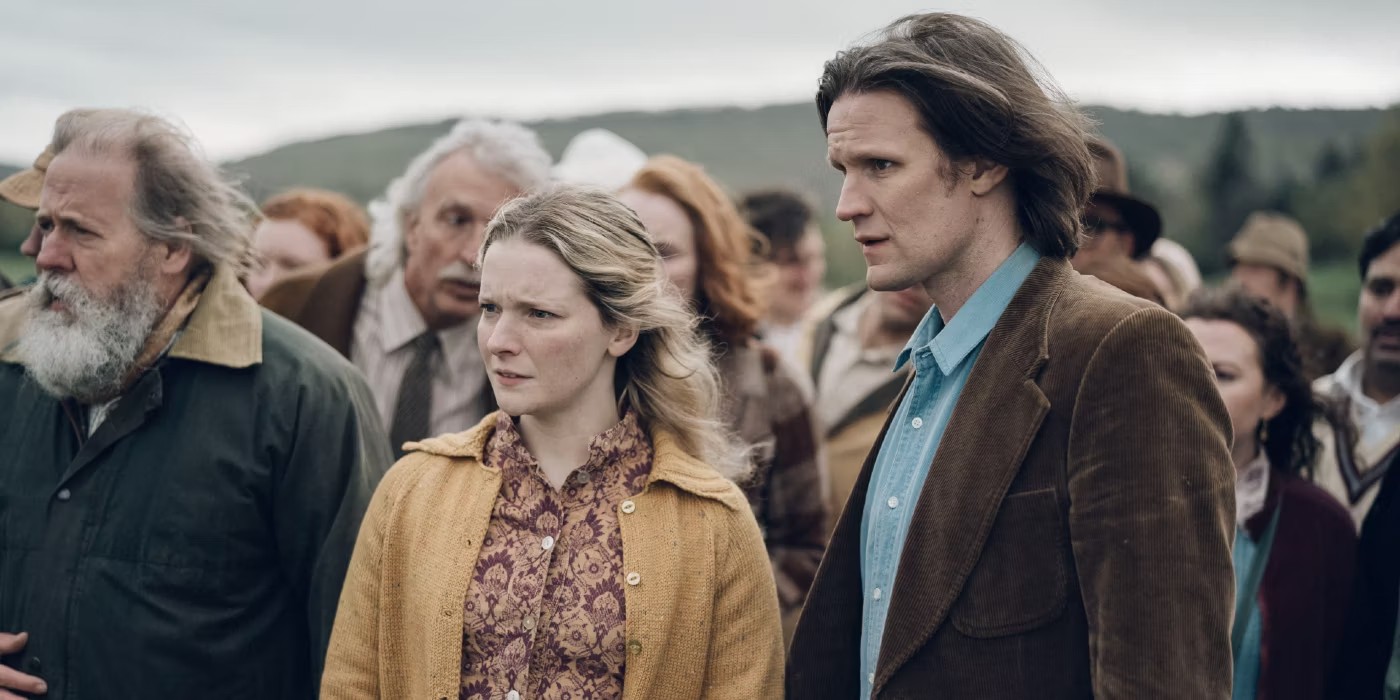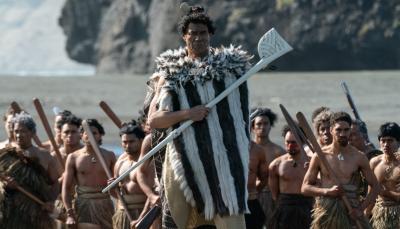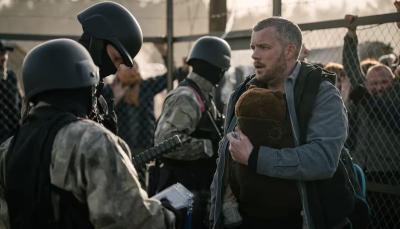Matt Smith & Morfydd Clark's Folklore Tale 'Starve Acre' Goes Gray with Grief
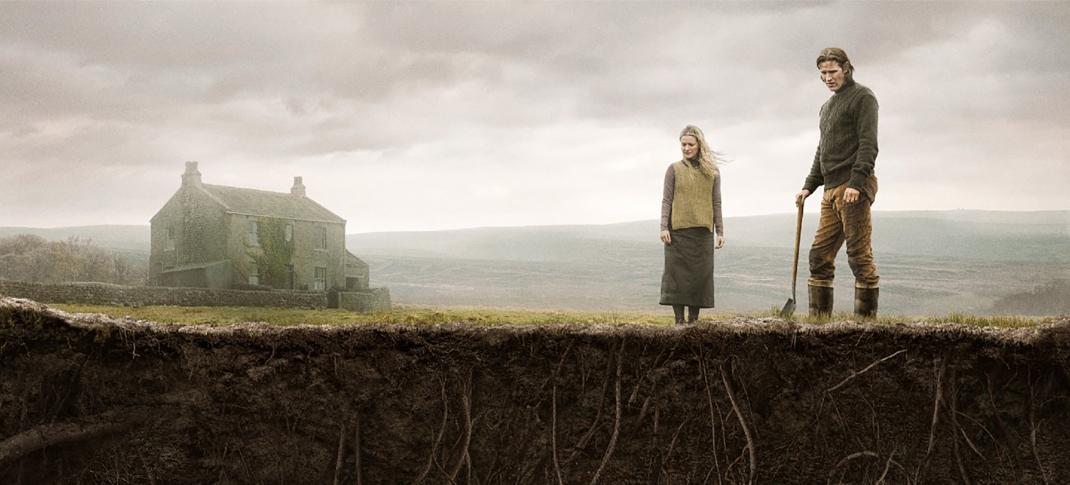
Matt Smith as Richard, Morfydd Clark as Juliette in 'Starve Acre'
BBC Films
Based on the well-received chiller novel by Andrew Michael Hurley, Starve Acre is a moody story of haunting folklore and grief upturning the land we stand on. Set in an ambiguous late-20th-century moment in the Yorkshire Dales, academic Richard (Matt Smith) and his wife Juliette (Morfydd Clark) struggle to look after their young son Owen (Arthur Shaw). After tragedy strikes, Richard and Juliette’s grief splinters them in their home, Starve Acre, a property tied up in alluring folklore of offerings and rebirth.
While it’s certainly nice to see Smith and Clark – who are currently leading the two biggest fantasy shows on TV – tackle a much more grounded fantastical tale, writer-director Daniel Kokotajlo can’t provide Hurley’s text with any arresting images or sustained dread, so the film never digs beneath the surface of its folk horror ideas.
There seems to be a modern trend in folk horror films to make their stories of earthy, violent, and wyrd faerytales as austere and drab as possible. Think dark, leaden skies, harsh wind rasping through the speakers, and grief-stricken faces who make a foolhardy attempt to stave off the creeping tendrils of an evil, disturbed natural order – choices like these do their small part in creating a provocative and vibrant subgenre duller than it should be.
Robert Eggers’ The Witch, which detailed a Puritan nightmare and launched Anya Taylor-Joy, is a clear influence for this style, and because of that excellent film’s tight grip on mood via sound and editing, we must all suffer every time we learn of dark rural secrets. The taut handling of repressed fear in The Witch has been compromised and spread like a dark fungus through lesser films like Lamb, The Hole in the Ground, Gretel & Hansel – and now Starve Acre. Even in more legitimate work like Ben Wheatley’s In the Earth or Ari Aster’s Midsommar, we see an asphyxiating style that wants to avoid the original thrills of the folk horror tradition – especially in British film; this began as an explosion of senses, of color, excitement, and provocation.
The Wicker Man, Blood on Satan’s Claw, and even BBC teleplays like Penda’s Fen all deal with folk horror as a deeply sensual experience, where something prickly and alive reared its head. (For two good modern examples, Doctor Who’s “73 Yards” puts a flashy spin on old-fashioned ghost stories, and the opaque and elliptical Enys Men is an experiment in recreating a type of experimental British filmmaking on an isolated island.)
It’s not to say that the drab, murky aesthetic and subdued mood of Starve Acre is an illegitimate mode of expression, but that it’s often used as a too-easy shortcut around an oppressive atmosphere or macabre ideas. Both of these outcomes are really hard to pull off – atmosphere requires a unified vision of sound, cuts, and direction, and dark, thorny ideas require finding something novel to say in a saturated genre. Starve Acre never indicates it can do either.
The color palette is dim and gray, the shot composition is basic and unexciting, and the cuts build no sense of momentum or dread. It’s clear that Starve Acre thinks there’s something interesting blossoming at its center but won’t express any interesting angle or depth. When Richard uncovers hare bones buried among old roots on Starve Acre, it sets in motion a process of impossible rejuvenation and bereaved projection that thankfully stays more ambiguous and abstract than something like Stephen King’s Pet Sematary.
But Kokotajlo puts too much faith in his lead actors to summon the distanced, chilling emotions that should be swirling through the film but instead remain restricted, out of sight, in our characters’ heads. Smith and Clark are clearly capable performers, and while it’s a shame their team-up as leads feel like a waste of their talents, it would be unfair to shift all the blame for Starve Acre’s flatness away from them.
Clark is particularly underserved by Kokotajlo’s screenplay – Juliette’s inner turmoil, painted in somnambulic colors, definitely feels a convincing depiction of grief, but it also traps the character, and by extension the actor, from leaving any imprint on the story beyond the cliches of the despondent wife falling into fantasy. Smith, with his burrowing through earth and scowling at intruders, can be more physically involved, but like Clark, his performance feels too internal, too reactive, in a film that wants to uncover something impossible about the earth we walk on.
It’s hard not to feel depressed and a little suspicious about Starve Acre. Touting the production logos of BFI and BBC Film, two of the most established production arms in the U.K., you suspect that the film only exists because it never threatened to get too expressive, sensual, or – as sober executives might see it – silly with the folk horror concepts. But serious horror need not take itself so seriously.
The explosion of unholy catharsis that the film ends on (despite being filmed and edited in an unexciting way) only confirms how much the film has been holding itself back. Starve Acre feels more like a morose misfire; it proves that the misunderstanding of how to combine grave themes with the fantastical is endemic to modern horror.
Starve Acre opened in limited release in theaters in the U.S. on Friday, July 26, 2024, and is expected to widen week to week through August.

